AEC

Body Public Space Visual Image
Bela Usabaev (DE)
From the public space around the AEC, impulses are transmitted through the body to the façade as part of an interactive performance. The completely free structure of public space meets the defined counterpart of the body in order to be mounted on the façade as if on a canvas.
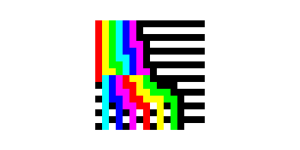
DEFACING
Camilo Sandoval (CO)
I use AEC’s façade to visualize data showing a broad panorama of what was and is still going on in Colombia. The data come from several institutions and observers of the conflict and are meant to reflect the magnitude of the events through abstraction.
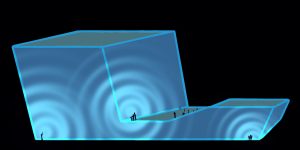
Overloading / Overloaded: Touch Me Softly
Yve Oh (CN)
The Ars Electronica Center itself is being expanded to include touch-sensitive sensors which will be transformed into an interactive installation. Several sensor-points placed on different positions on the façade invite visitors to touch, caress, scratch, strike and hit the building. Touch, in turn, creates wave animations that spread across the building. Overloading the sensors (eg. hard knocking) causes the whole façade to crash.
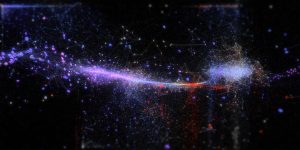
Immersify
Poznan Supercomputing and Networking Center (PL), Spin Digital Video Technologies GmbH (DE), Ars Electronica Futurelab (AT), Marché du Film – Festival de Cannes (FR), Visualization Center C (SE)
Immersify is a European Research & Development consortium funded by the EU’s Horizon 2020 program, connecting the Ars Electronica Futurelab with four other European partners to research the next generation of immersive media. At the 2019 Ars Electronica Festival, Immersify presents selected works at Deep Space 8K.

Deep Space 8K
The Ars Electronica Center offers its visitors something that cannot be found anywhere else in the world: 16 x 9 meters of wall and another 16 x 9 meters of floor projection, laser tracking and 3D-animations make the Deep Space 8K something very special indeed.
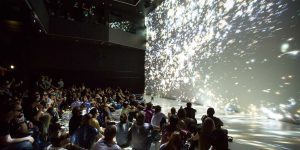
Immersify 8K Live Streaming Demo
The Immersify 8K Live Streaming Demo will premiere a real-time transmission of 8K content in the immersive environment that is Deep Space 8K. The encoder and decoder functionalities that are necessary for such an ambitious streaming demonstration have been developed in the context of the European research project Immersify. Immersify partner Spin Digital is providing flexible and high-performance software 8K playback on PC platforms with the software player Spin Player, while the Advantech VEGA encoder platform and streaming via public internet complete the setup. Lastly, Deep Space 8K at the Ars Electronica Center provides an impressive media environment for the pioneering demonstration. In collaboration with NHK Technologies, a live stream will be demonstrated from Japan to Linz, and with PSNC, an 8K stream from Poznan in Poland to Deep Space 8K, each with special content.
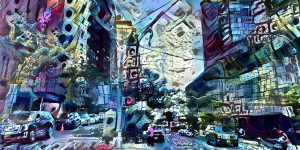
VH AWARD
by Hyundai Motor Group (KR)
The VH AWARD’s purpose is to uncover promising Korean artists creating media art. It seeks to support the art-making process of these young media artists but to also help them gain international recognition. To guarantee a fair evaluation, award winners will be selected by highly celebrated curators from all around the world. In addition, the winners will have the opportunity to display their works of art through the 24.4-meter-long media wall, located at the Hyundai Motor Group University.

tx-reverse 360°
Virgil Widrich (AT), Martin Reinhart (AT)
20 years after Martin Reinhart and Virgil Widrich used this film technique for the first time in a short film (tx-transform, 1998), they again deal with the question of what previously unseen world arises when space and time are interchanged, in a cinema at full 360°.
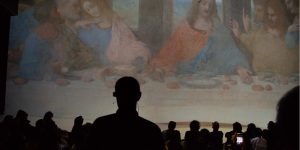
LSI Project
Franz Fischnaller (IT)
LSI is an immersive experimental digital narrative and virtual storytelling in 8K, based on The Last Supper (Italian: L'Ultima Cena), a late 15th century mural painting by Leonardo da Vinci located in the refectory of the Convent of Santa Maria delle Grazie in Milan.
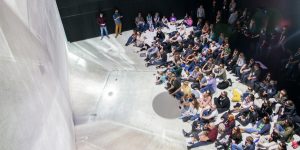
The Great Pyramid in 3D, From the BBC Series Ancient Invisible Cities
BBC Studios (UK), ScanLab Projects (UK)
The Great Pyramid in 3D, From the BBC Series Ancient Invisible Cities explores possibilities of virtual archaeology by scanning and digitally rebuilding historical architecture – in this case, the Great Pyramid of Giza. In this unique form of presentation, visitors can choose between different paths to explore the ancient structure, moving interactively in a 3D environment with stereoscopic 360° video at 12K resolution. The experience is enhanced by a specially created soundtrack and live expert commentary.


